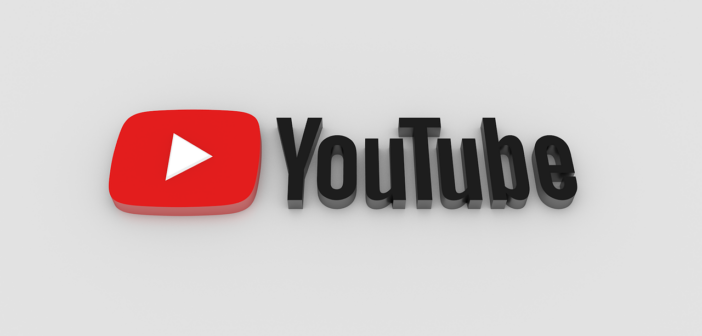Table of Contents
What is the YouTube Algorithm?
In 2023, the YouTube algorithm isn’t just a one-size-fits-all program that indiscriminately pushes out popular videos to every user. It’s a highly personalized recommendation engine that tailors content to individual preferences and viewing history. The algorithm plays a significant role in deciding which videos appear in your search results, populate your home feed, and get listed under recommended videos.
The key to understanding the algorithm is to recognize its main goal: to keep viewers engaged on the platform for as long as possible. With the algorithm steering about 70% of what people watch, it’s pivotal in shaping both the viewer’s experience and the success of creators on the platform.
That’s the 2023 YouTube algorithm for you: incredibly sophisticated and geared towards making the platform more interactive and personally engaging than ever before.
Key Factors of the YouTube Algorithm
In 2023, what does the YouTube algorithm consider when recommending videos?
- Past Preferences: Tailored recommendations based on your viewing and engagement history.
- Subscriptions: Content from channels you subscribe to gains priority in your feed.
- Co-watching Patterns: Videos frequently watched together often appear as recommendations.
- Search Queries: YouTube also considers the terms you type into the search bar to fine-tune its recommendations. If you’re consistently searching for “cooking tutorials,” expect to see more of those types of videos pop up in your feed over time.
- Engagement Rates: The algorithm also pays attention to how viewers engage with videos. This includes not just likes and dislikes, but also the amount of time spent watching a video (watch time), and the level of audience participation in the comments section. A high level of engagement generally signals to YouTube that the content is worth recommending to others.
- Freshness: YouTube likes to keep things current. If there’s a new video that aligns with your interests and is receiving good engagement, it may be pushed up in your recommendations, even if you’ve never interacted with that channel before.
- Session Time: The amount of time you spend on YouTube during a single session is another factor. The algorithm aims to maximize this metric, so it will try to serve you a string of videos that it predicts will keep you watching for longer.
- Quality Metrics: YouTube also uses more behind-the-scenes metrics, like video production quality and user-reported issues (like a video being misleading or inappropriate), to determine if a video should be recommended. The idea is to ensure a baseline level of quality across the videos that get significant visibility.
YouTube’s algorithm in 2023 relies on past preferences, subscriptions, and co-watching patterns to recommend videos.
Metrics Used in YouTube Recommendations
What metrics influence the YouTube algorithm for video recommendations?
- Watch Metrics: Duration and percentage of the video watched.
- Engagement: Likes, dislikes, and post-watch survey results.
- Regional Context: Time of day and language also matter.
- Click-Through Rate (CTR): This metric gauges how often people click on your video after seeing its thumbnail and title in their feed. A higher CTR often indicates that your video is attracting attention, which can lead to it being more widely recommended.
- Viewer Retention: Not to be confused with watch time, viewer retention measures the average percentage of a video that viewers watch. Videos that maintain a viewer’s attention for a longer percentage of their total length are more likely to be recommended.
- Social Shares: The number of times your video is shared on social media platforms can also influence its visibility. YouTube considers these social signals as a form of endorsement, which can boost your video’s recommendation potential.
- Search Relevance: If your video is frequently appearing in search results and getting clicked on for specific queries, it gains “search relevance,” making it more likely to be recommended when similar topics are queried or trending.
- User Feedback: YouTube also collects user feedback through features like the “Not Interested” option and why users choose it, providing further context to refine future recommendations.
- Age of Video: While new videos often receive a “freshness” boost, older videos with enduring relevance (often called “evergreen content”) can still be recommended, particularly if they see a sudden uptick in views or engagement.
- Video Velocity: This refers to the speed at which a video gains views. A rapid accumulation of views can signal viral potential, prompting YouTube to quickly disseminate the video through its recommendation features.
- Channel Authority: Channels with a high subscriber count, strong engagement, and consistent video performance over time can earn what’s referred to as “channel authority,” making their videos more likely to appear in recommendations
Key metrics include watch time, engagement like likes and dislikes, and regional factors like language and time of day.
The YouTube Search Algorithm
How does YouTube’s search algorithm work in 2023?
- Relevance: Aligns title, tags, and description with the search query.
- Engagement: Considers watch time, likes, comments, and shares.
- Quality: Measures the authority and trustworthiness of the channel.
- User History: Incorporates your past watches and searches.
- Keyword Optimization: The algorithm values how well the video’s title, description, and tags match the keywords in a user’s search query. This is why keyword research and optimization are more critical than ever for creators who want their content to be easily discoverable.
- Video Freshness: Just like with the recommendation algorithm, new videos often receive a temporary boost in search rankings. However, evergreen content that continually performs well can also rank high in search results.
- Session Duration: YouTube evaluates not just the watch time of the individual video but also the overall time a viewer spends on the platform after clicking on that video. Longer session durations can positively impact your video’s search ranking.
- Closed Captions: Providing closed captions or subtitles can improve the search visibility of your video, as it makes the content accessible to a broader audience and adds additional text that can be indexed by the search algorithm.
- Localization: Your video’s search ranking can be affected by where the viewer is located. Geotagged content, or content in the viewer’s local language, can have an edge in specific regions.
- Channel Consistency: Videos from channels that regularly upload content and have a higher overall watch time are given a slight advantage in search rankings. The algorithm views this as a sign of reliability and quality.
- Playlist Inclusion: Videos that are part of a playlist or are frequently added to viewers’ playlists have a higher chance of appearing in search results. This signifies to the algorithm that the video offers value, either as standalone content or as part of a series.
- Thumbnails: While not a direct ranking factor, an engaging thumbnail can increase your video’s click-through rate, indirectly improving its position in search rankings.
YouTube’s search algorithm prioritizes relevance, engagement, quality, and user history to provide the most useful results.
Understanding the YouTube Shorts Algorithm
How are YouTube Shorts recommended?
- Engagement: Likes and comments have a role but are less impactful than for regular videos.
- Watch Time: Not as critical, given the short nature of the videos.
- User Interaction: While engagement metrics like likes and comments are important, YouTube Shorts also considers the rate at which users skip the short or watch it in its entirety. This helps the algorithm understand if the content is compelling from start to finish.
- Virality Potential: Shorts that show rapid initial growth in views and shares within the first few hours or days are more likely to be recommended to a broader audience. The algorithm picks up on these quick engagement signals as indicators of high entertainment value or shareability.
- Looping Factor: One unique aspect of Shorts is the loop feature. The algorithm pays attention to how many times users loop the video. High loop rates can indicate that the video is engaging or intriguing, warranting broader exposure.
- Category and Tags: Proper categorization and tagging can help your Short reach the right audience. While not as weighted as other factors, it still plays a role in how Shorts are recommended.
- Discoverability: Shorts are also featured in dedicated sections like the “Shorts Shelf,” which is separate from the traditional YouTube feed. How often a Short appears here can be influenced by both engagement and the user’s past interaction with Shorts content.
- Channel Authority: Even though Shorts are a different format, the overall reputation and performance of your channel can impact how your Shorts are recommended. Consistency in uploading high-quality Shorts can enhance your channel’s authority in this space.
- Localization: Just like with regular videos, localization factors such as language and geolocation can influence who sees your Shorts. Content creators who optimize their Shorts for a global audience may see improved discoverability.
For YouTube Shorts, engagement and watch time are key metrics but operate differently than they do for longer videos.
Tips to Boost Organic Reach on YouTube
Keyword Research:
Keyword research is not just an SEO staple; it’s the backbone of your organic YouTube strategy. Utilize tools like Google Trends, YouTube’s search suggest feature, or specialized software like TubeBuddy to identify high-volume, low-competition keywords relevant to your niche. Once you’ve identified these keywords, integrate them naturally into your video titles, descriptions, and even your video script to improve visibility.
Content Consistency:
Consistency is key when it comes to YouTube. Not only does a consistent posting schedule keep your audience engaged, but it also sends positive signals to the YouTube algorithm, which in turn helps increase your organic reach over time.
High-Quality Thumbnails:
The first thing users see before clicking your video is the thumbnail. High-quality, engaging thumbnails can significantly improve your click-through rate (CTR), leading to better organic reach. Make sure your thumbnails are compelling, clear, and representative of the content you’re offering.
Audience Retention:
High audience retention rates indicate to YouTube that your content is valuable and engaging, which can boost its visibility. Try to keep your audience interested throughout your video by offering valuable insights, being entertaining, and structuring your video in an easy-to-follow manner.
Community Engagement:
Replying to comments, getting more likes and shares, or even hosting a giveaway can significantly boost your community engagement metrics. High engagement sends a strong signal to YouTube that your content is resonating with your audience, which can improve its organic reach.
Video Optimization:
Make the most of your video description and tags to give the YouTube algorithm more context about your video. This can help your video show up in relevant keyword searches, increasing your organic reach. A well-optimized video can also appear in ‘Up Next’ recommendations, attracting organic traffic from other popular videos in your niche.
Cross-Promotion:
Don’t rely solely on YouTube for your reach. Leverage other social media platforms to share your content and drive traffic back to your YouTube channel. If these viewers engage well with your content, it’s likely to be promoted more by YouTube’s algorithm.
Analyze and Adapt:
Regularly check your analytics to see which strategies are working and which aren’t. YouTube provides detailed data on viewer demographics, engagement, and how people are discovering your videos. Use this information to refine your strategy and make data-driven decisions to boost your organic reach.
User-Generated Content (UGC):
Encourage your audience to create their own content around your brand or channel. Whether it’s through comments, community posts, or even their own videos, UGC can expose your channel to a broader audience and drive more organic reach.
Localized Content:
If you’re targeting audiences from different linguistic and geographic backgrounds, consider offering subtitles or even separate videos tailored to these audiences. Localization can vastly increase your organic reach and subscribers by making your content accessible to a wider, global audience.
By employing these multifaceted strategies, you’re not just throwing content into the YouTube abyss and hoping for the best; you’re taking a proactive approach to ensure your videos get the organic reach and engagement they deserve.
This ultimate guide aims to demystify YouTube’s algorithm as of 2023, providing you with the tools and insights to improve your channel’s performance.




